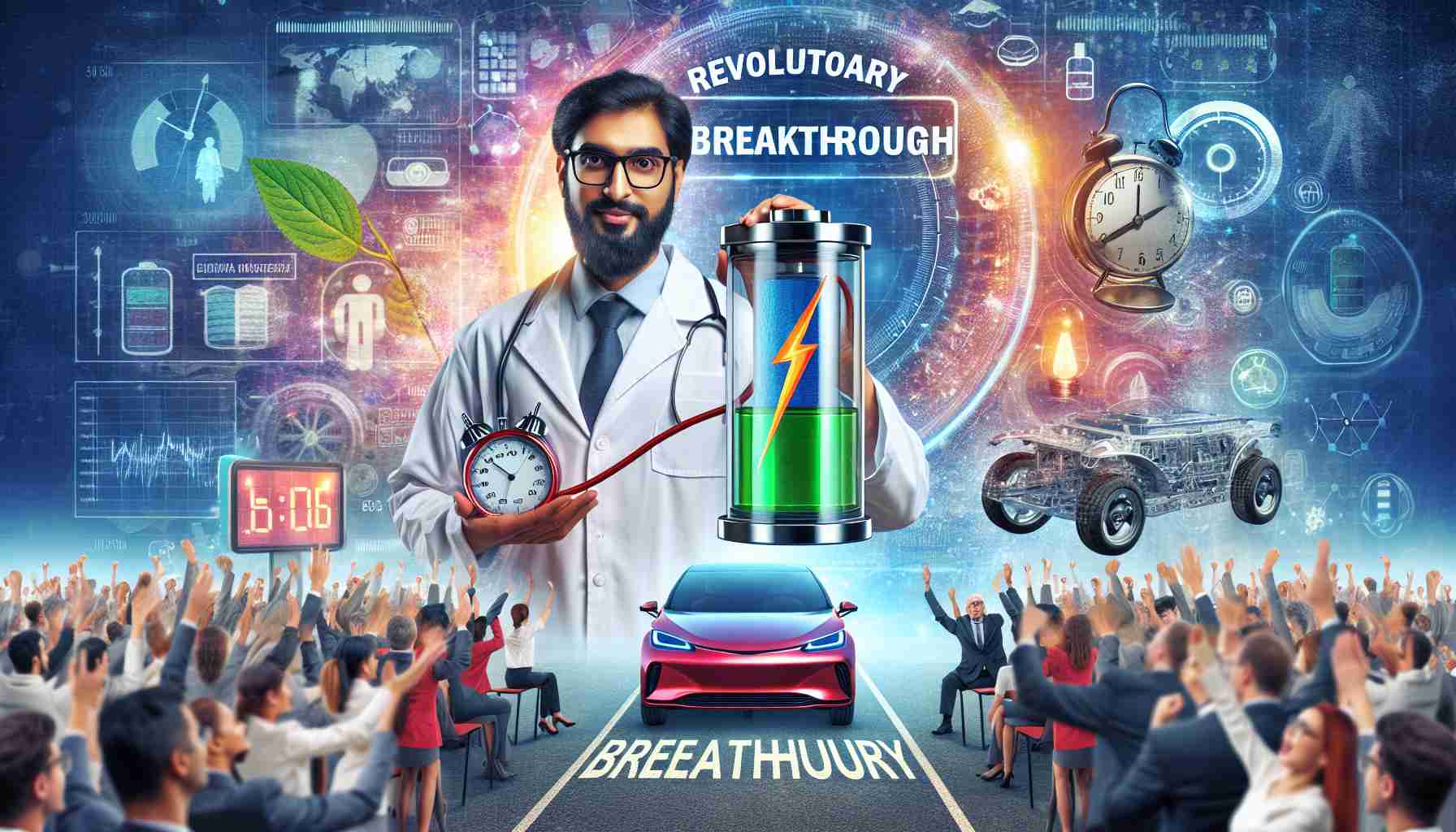In an exciting development for electric vehicle (EV) enthusiasts, a US-based startup, Solidion, has unveiled an innovative system that could charge lithium batteries in just five minutes. This transformative technology not only aims to meet the growing demands of the EV market but also makes fast charging feasible in any climate.
Swift Charging Technology
Solidion’s breakthrough centers around a patented system featuring a cutting-edge graphene-based heat spreader. This technology is instrumental in rapidly warming batteries before, or even during, the charging process. Remarkably, during a discharge, an integrated cooling mechanism is activated, ensuring batteries are kept at optimal temperatures and preventing overheating.
For EVs to truly compete with traditional internal combustion engine vehicles, fast and efficient charging is crucial. Until now, rapid charging in cold climates has been challenging due to the battery’s sensitivity to temperature variations. Solidion’s innovation is set to overcome this hurdle, promising fast, reliable charging regardless of external weather conditions.
Sustainable Graphite Solutions
In an additional stride towards sustainability, Solidion is tackling the anticipated graphite supply shortfall by pioneering a cost-effective method to produce high-quality graphite from eco-friendly sources such as biomass and recycled materials. Their vision is to position the US among the top graphite producers globally, furthering their commitment to environmentally conscious manufacturing.
These groundbreaking contributions from Solidion not only promise enhanced battery performance and safety but also a significant reduction in EV charging times, paving the way for a more sustainable and efficient future in transportation.
Revolutionizing the EV Industry: What Solidion’s Innovation Means for You
In a world where sustainability and efficiency are paramount, the latest advancement by the US-based startup Solidion has profound implications beyond merely speeding up EV battery charging. The unveiling of their cutting-edge technology has sparked discussions ranging from economic impacts to ecological benefits, opening a new chapter for how we perceive electric transportation.
Community and Economic Impacts
Solidion’s new system is not only a technological marvel but also a potential catalyst for economic growth. By harnessing the power of graphene-based heat spreaders and sustainable graphite production, the company aims to boost domestic manufacturing jobs, strengthen supply chains, and reduce dependency on foreign materials. This shift could stabilize prices and make electric vehicles more affordable for the average consumer, stimulating further adoption.
Communities stand to gain significantly as local economies welcome industry-related opportunities. What if every region could produce its own supply of high-quality graphite? This decentralization could lead to a boom in small-scale industries, fostering innovation and economic resilience.
Unexpected Environmental Benefits
The environmental advantages of Solidion’s method extend far beyond reduced charging times. By leveraging biomass and recycled materials for graphite production, the company is pioneering ways to repurpose waste and reduce environmental footprints. Transitioning to sustainable sources also ensures that geopolitical tensions over key resources can be mitigated, promoting global cooperation and environmental stewardship.
However, rapid technological advancements often come with controversy. What seems like an environmental boon today might bring unforeseen challenges tomorrow. Could the intensification of biomass utilization disrupt local ecosystems? Such questions warrant ongoing research and monitoring to avoid substituting one environmental problem for another.
Critical Questions and Considerations
As we delve deeper into Solidion’s innovation, several questions arise that extend beyond mere technical feasibility:
– How Will This Affect EV Adoption? Rapid charging capability removes one of the last barriers to EV adoption. But will infrastructure development match this pace? Are urban areas ready to implement necessary charging stations, and how will rural locations keep up?
– What Are the Economic Trade-Offs? While job creation in new industries is promising, what happens to existing jobs in traditional automotive sectors? Should governments step in to retrain the workforce, or do we face a risk of economic disparity?
– How Does This Influence Global Dynamics? With a sustainable approach to production, the US may become a leader in graphite, challenging current global leaders. What implications does this hold for international trade relations?
Advantages and Disadvantages
Advantages:
1. Significantly reduced charging time increases convenience and appeal of electric vehicles.
2. Eco-friendly graphite production from renewable sources supports environmental goals.
3. Enhanced economic opportunities through innovation and job creation.
Disadvantages:
1. Potential ecological impact on local ecosystems from intensified biomass usage.
2. Infrastructure challenges related to adapting current systems to new technology.
3. Economic disruption risk in traditional automotive sectors as industry shifts.
For a broader look at the implications of such technologies, consider perusing resources from IEEE or keeping abreast of industry shifts at Bloomberg.
As Solidion charts a path toward a sustainable future, their innovations remind us that technological advancement is a complex tapestry of opportunities and responsibilities. We must embrace change with open eyes, ensuring a balanced approach that benefits all layers of society and the planet.







